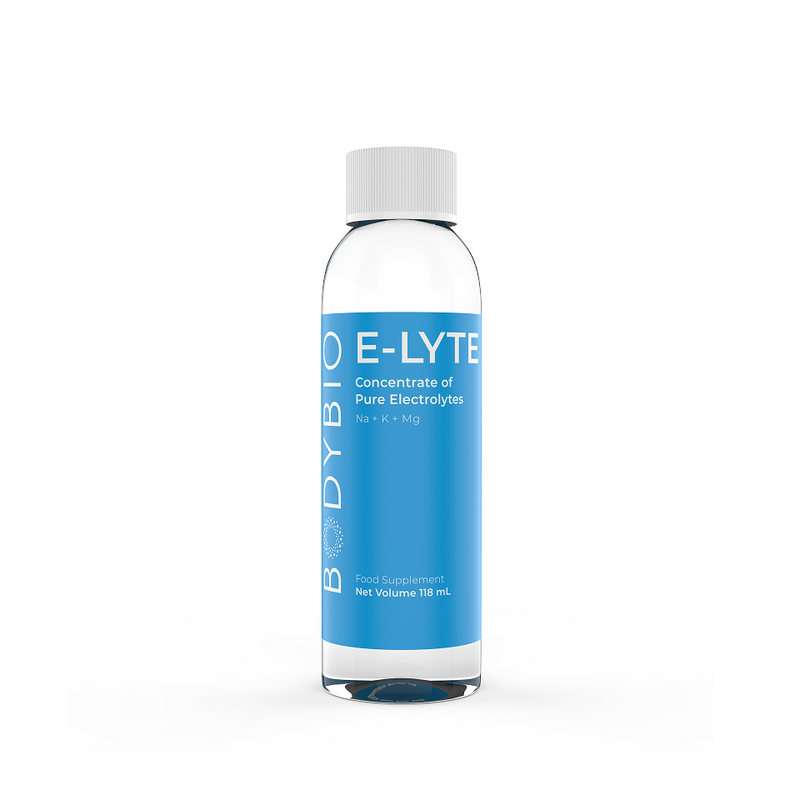How to Prevent Altitude Sickness Naturally (Like a Pro)
Key Takeaways:
Key Points:
- Altitude sickness can happen to anyone. It occurs due to decreased oxygen levels and increased barometric pressure in the environment. The best way to avoid altitude sickness is to take preventative measures before experiencing high altitudes.
- Symptoms of altitude sickness include dizziness, nausea, exhaustion, an increased heart rate, and dehydration. However, everyone is impacted by altitude differently, so it’s important to pay attention to any unusual symptoms.
- Key preventatives for altitude sickness include ample hydration, increased carbohydrate intake, and a carefully planned schedule that gives you time to adapt to your environment.
What’s better than a vacation in the mountains?
You’ve packed your trip to the brim with activities like snowboarding, local sightseeing, and a dip in a picturesque hot tub.
You’re on top of the world…and nothing can bring you down.
Famous last words, right?
Altitude sickness can seemingly come out of nowhere and bring on symptoms of dizziness, fatigue, and nausea without warning. A quick “reality check” for your hike or exciting vacation.
Even people who think they’re in decent shape can meet a combination of air pressure and low oxygen—and feel like they’ve been hit by a bus.
Don’t let this happen to you. The best form of altitude sickness prevention is preparation. Use these tools to get your body ready for environmental changes so you can spend your entire vacation doing what you love.
Table of Contents:
- What Is Altitude Sickness?
- Symptoms of Altitude Sickness
- How to Prevent Altitude Sickness
- High-Quality Electrolytes You Can Count On
What Is Altitude Sickness?
Altitude sickness is a physical reaction to lower oxygen levels and increased barometric pressure in the environment. A thinner atmosphere means lower available oxygen for the body — and can sometimes result in uncomfortable symptoms. Although it’s possible for humans to live at higher altitudes, it often takes time for our bodies to adjust to the lower available oxygen. And how much time that takes varies slightly from person to person.
Altitude sickness typically occurs when an individual ascends too quickly without an adjustment period. It can also occur at extremely high elevations, like atop Mount Everest — where oxygen is almost too low for survival. Fortunately, most of us aren’t planning on that particular climb. Or, if the individual has pre-existing conditions that make it difficult for their body to adjust to sudden changes.
Symptoms of Altitude Sickness
It’s estimated that altitude sickness affects up to 50% of people who live at low altitudes and travel up. The tricky thing about altitude sickness is that it affects everyone differently and can be difficult to pinpoint.
For example, your friends may experience a dizzy spell, while you suffer from an unexplained headache and nausea. There may be times in your life when altitude has no effect on you — and other moments when altitude sickness becomes a real threat to your hike or vacation.
Here are some symptoms of altitude sickness to watch out for:
- Dizziness
- Headaches
- Fluid retention
- Dehydration
- Asthma or trouble breathing
- Increased heart rate
- Nausea
- Exhaustion
- Insomnia
Remember, everyone reacts a little differently to altitude. If you notice symptoms or changes in your body’s natural rhythms, you may want to consider some of these altitude sickness prevention methods.
Who Is More At Risk for Altitude Sickness?
Your age and fitness level can help you better withstand activities at altitude, but these factors have little to do with your overall tolerance of altitude. This misconception gets people in trouble, because they enter altitude over-confident and under-prepared.
You should always listen to your body and consider your symptoms for altitude sickness prevention.
While anyone can be affected, some factors can make you more susceptible to altitude sickness:
- Cardiovascular issues. High altitude can increase heart rate and should be avoided for those at immediate risk of heart attack.
- Mineral deficiencies. Low sodium, iron, magnesium, and other minerals can increase the risk of dehydration and quicken the symptoms of altitude sickness.
- Lymphatic disorders. Since altitude can alter the balance of fluids in your body, people with lymphedema and other lymphatic disorders may be at risk for symptom flares.
- Chronic illness sufferers. For anyone with a chronic illness, traveling at high altitude can include more risks and induce uncomfortable symptoms. Always check with your doctor before visiting high altitudes, and take extra precaution (like making sure you’re well hydrated).
- Balance disorders. If you have a balance disorder, it’s important to pay attention to altitude. Dizziness is a common symptom and can become problematic if you’re driving, hiking, or generally unsteady on your feet.
How to Prevent Altitude Sickness
The best way to prevent altitude sickness is to stay ahead of it. Begin prepping weeks before your trip into the mountains, and your body will thank you.
1. Always Be Aware Of The Current Altitude
One of the biggest reasons people get sick from altitude is a simple failure to comprehend the altitude around them. In mountainous areas, it’s easy to go from 6,000 feet above sea level to 10,000 feet above sea level — in just thirty minutes by car.
If you fly into a city that’s only 6,000 feet, you might assume the entire trip will remain at this altitude. But this is unlikely. Most mountainous areas can vary by thousands of feet and catch you unprepared.
Stay ahead of altitude sickness by researching hikes, retreats, ski lodges, and National Parks before you go. For hikes, pay attention to your starting altitude and your ending altitude (or the highest point on your hike).
For National Parks and mountain drives, look up the highest points. If you’re visiting a ski lodge, retreat center, or tourist destination, compare your hotel’s altitude with the altitude of your destination.
Depending on your research, you’ll want to prepare hearty snacks, electrolytes, minerals, natural painkillers, and first aid equipment (just in case!). We also recommend that you hold off on a high-altitude trip until you’re more adjusted to the environment around you.
2. Consume Lots of Minerals
The most common recommendation for altitude sickness prevention is hydration. Adventure experts will recommend you chug water, especially during your first few days of adjusting.
But if your mineral levels are out of whack, water only goes so far. In some cases, too much water (without adequate minerals) can actually make matters worse.
We recommend building up your mineral stores at least three weeks before altitude exposure. Try drinking daily adrenal cocktails and supplementing with liquid mineral drops. You can also consume mineral-rich food and drinks, like organ meats, bone broth, and mineral-rich tea, like nettle leaf, raspberry leaf, and red clover.
This method prepares your body for the extra stress and potential dehydration, making it easier for you to enjoy a symptom-free mountain vacation.
3. Eat Plenty of Complex Carbs
Diet can have a lot to do with your performance at altitude. Since your body is working harder at high altitudes (and may require increased cortisol and adrenaline to function), it’s common to burn through carbohydrates much quicker than normal.
The body tends to prefer carbs as an energy source when up high, too, as opposed to fats and protein. For active people who plan to hike or snowboard, it’s recommended to boost your intake of complex carbohydrates by around 60% when at altitude.
4. Plan Recovery Days + Stay Under 6,000 Feet on Your First Day
Starting your trip with a high-altitude workout is a recipe for disaster, since time is one of the biggest factors in avoiding altitude sickness. You need ample hours to adjust to new altitudes, and you shouldn’t climb higher without giving yourself a break.
Sure, when you arrive in a mountain town, you’ll want to get right to the activities. But it’s recommended to stay below 6,000 feet on your first (and even second) days.
Commit to an itinerary that keeps your activities at a lower altitude for the first day or two. And, don’t do intense workouts. Then, once your body is more adjusted and capable, you’ll be able to venture up high and actually feel good doing it.
5. Bring Oxygen with You
Yep, you can buy canned oxygen. It’s most common to use this type of oxygen for extreme sports and mountain climbing. But, if you’re particularly worried about altitude sickness, want it for emergencies, or have a preexisting condition, bringing some oxygen along could help revitalize you and provide much-needed peace of mind.
You can buy canned oxygen anywhere online and even at box stores like Walmart or Target. If you’re visiting a touristy area, many ski towns have oxygen on hand and offer oxygen therapy as a medical service at wellness spas.
6. Stay Hydrated with Electrolytes
Your fluid retention rate changes at higher altitudes, so you may notice swelling and fluid retention in your extremities. At the same time, bathroom trips could become more frequent as the kidneys work overtime to maintain healthy pH levels. Just assume all your organs are working extra hard when at higher altitudes. With fewer available resources and increased respiration, dehydration is common.
Most people are extra thirsty when they first arrive at higher altitude locations. Lean into that thirst and make sure you get plenty of nutrient-dense foods, too!
Drinking water can be helpful, but you’ll recover faster from altitude sickness with electrolytes. These help to balance the fluids in your body, help your cells retain more water, and give the cells the extra energy they need to conquer the lack of oxygen.
Make sure you take lots of electrolyte supplements with you and use them once or twice a day, along with filtered water.
7. Drink Alcohol Sparingly
Ski culture and drinking kind of go hand-in-hand. But be prepared for alcohol to impair your judgment much faster than normal. The lack of oxygen makes it easy to get drunk and could leave you with a powerful hangover. This probably isn’t the way you want to begin your mountain adventure.
Since altitude sickness prevention relies so much on hydration and nourishment, this makes alcohol problematic, too. It’s a diuretic, which means it can flush much-needed fluids out of your body. It’s best not to enjoy alcohol until you’re well-adjusted to the altitude change (and preferably, once you’re done adventuring outside).
High-Quality Electrolytes You Can Count On
Electrolytes are a powerhouse of nutrients for your cells — carefully conducting electrical currents so your muscles can function optimally. The goal of a high-quality electrolyte supplement is to carefully deliver a rich source of essential electrolytes into the body for optimal hydration.
However, most electrolyte supplements on the market today don’t deliver on this rich source of essential electrolytes. Instead, they dump high levels of sodium and sugar for instant energy rather than long-term sustainable energy. Not only that, but they load up on high sugar content, preservatives, and chemically processed ingredients.
That’s why we formulated the perfect electrolyte supplement to keep your energy (and spirits) high on your next high-altitude adventure — without any added junk.
Our Best Supplement to Prevent Altitude Sickness — Try E-Lyte
Taylor A. T. (2011). High-altitude illnesses: physiology, risk factors, prevention, and treatment. Rambam Maimonides medical journal, 2(1), e0022. https://doi.org/10.5041/RMMJ.10022
Luks, A. M., Swenson, E. R., & Bärtsch, P. (2017). Acute high-altitude sickness. European respiratory review : an official journal of the European Respiratory Society, 26(143), 160096. https://doi.org/10.1183/16000617.0096-2016
Viscor, G., Corominas, J., & Carceller, A. (2023). Nutrition and Hydration for High-Altitude Alpinism: A Narrative Review. International journal of environmental research and public health, 20(4), 3186. https://doi.org/10.3390/ijerph20043186







